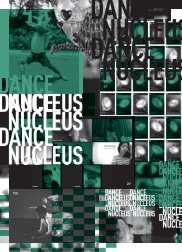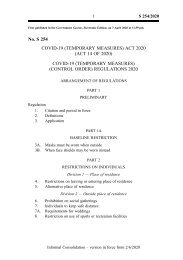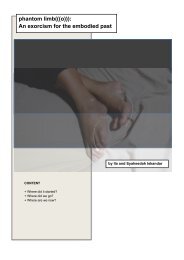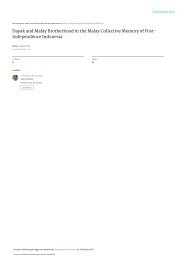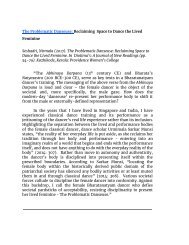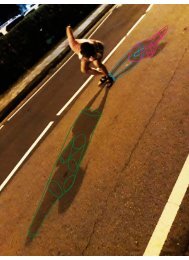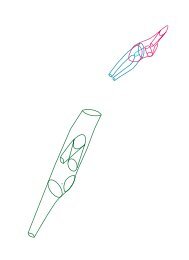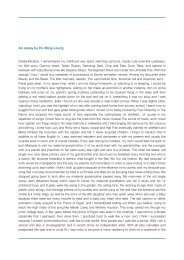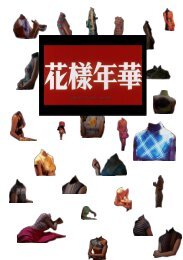Critical Path Digitalmeetup_Transcript
You also want an ePaper? Increase the reach of your titles
YUMPU automatically turns print PDFs into web optimized ePapers that Google loves.
Charemaine Seet<br />
I have a similar background, being half Chinese, first living in Asia and then living in Australia. I<br />
felt rage in the past about being pigeonholed or catalogued based on my perceived Asian-ness<br />
but until this kind of digital technology it has been difficult for me (and us) to communicate to<br />
people in similar situations in different parts of the world.<br />
Ting-Ting Cheng<br />
I found it interesting that I am the only person having a visual art background, rather than a<br />
contemporary dance one. I don’t know if it makes any difference in terms of our relationship<br />
with our bodies, which is related to race. I lived in Taiwan until I was 22, and then I moved to<br />
UK for 11 years. I just moved back to Taiwan this year. I also feel that “racial-related discussions”<br />
are not commonly seen here. Taiwan is “relatively” mono-ethnic, even though there are<br />
aboriginal Taiwanese and immigrants from Southeast Asia. I feel like the article is a part of my<br />
narrative. I feel quite emotional towards Miguel’s writing, but I can’t pinpoint why. It does not<br />
mean that I felt pushed into a certain direction. I guess my emotion could be related to moving<br />
back to Taiwan, seeing how different the concept is here compared to how it is in UK. I find it<br />
interesting that how it raises different issues in different cultural or national contexts. I guess<br />
this is my initial thought.<br />
Like Charemaine, I also really like the quote “who has the right not to explain themselves?”,<br />
I think that is the point for me. I also really like what Miguel said, “who is not here”. I feel we<br />
need to ask the question every time we make art or host art events.<br />
Justine Shih Pearson<br />
For me the most emotional part in the article was not so much that end comment, although I<br />
totally agree with it and I actually read it as very political. The thing that really resonated with<br />
me is when Miguel describes his experience at a workshop at Movement Research where there<br />
is an older white critic who he is respectful of and his feeling of stunned-ness when she says,<br />
‘Well, but how are we going to dance these things?’ or ‘What is this? How can we take these<br />
issues of race and injustice and whatever and put them into dance? Dance is about motion!’<br />
And my understanding of his reaction is, ‘how naive of her’ as he is stunned into silence. I feel<br />
like I have some of that every week, and that’s probably specific to living in a country in which I<br />
am a racial minority. But I am thinking of something that Sara Ahmed wrote in which she talked<br />
about the labour of maintaining comfortableness for the white majority and the work that people<br />
of colour do to maintain kind of just going along with it and not raising a fuss. That moment<br />
to me was very much that.<br />
Charemaine Seet<br />
If you make a fuss it can kill your career!




